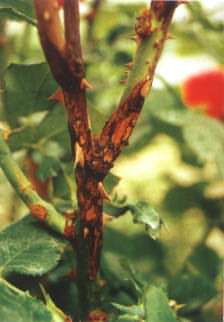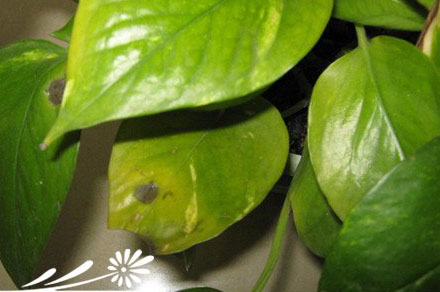Control methods and techniques of rose withered branch disease
Rose withered branch disease usually occurs in the branches, the spot initially is a small red spot, and gradually expands into dark color, the center of the spot becomes light brown, and the brown and purple edges around the spot are obviously contrasted with the green of the stem. The conidium of the disease appears when the center of the spot turns brown. With the increase of the meristematic vesicle, longitudinal cracks appear in the stem epidermis. When the disease is serious, some of the branches and leaves above the disease wither and die.
[pathogen and incidence regularity] the pathogen is Conidium roseum. The pathogen overwintered on the diseased branches with mycelial components, and the following year produced meristems and spread by wind and rain. The pathogen invaded people from injured □, and the cut □ during grafting and pruning was easy to infect the disease.
[anti-metallurgical method]
① did not collect diseased branches and burn them in autumn.
② pruning should be carried out on sunny days.
During the onset of ③, 50% carbendazim wettable powder, 70% chlorothalonil wettable powder or 50% carbendazim wettable powder can be sprayed for prevention and treatment. (flower Office)

The difference between roses and roses! Control measures of rose withered branch disease
Do you know the difference between roses and roses? Is the control method of rose withered branch disease? Next, the editor will introduce you in detail the difference between rose and rose and the prevention and treatment of rose withered branch disease.
The difference between roses and roses:
From a botanical point of view, "rose" and "rose" are two different flowers belonging to the genus Qiang of Rosaceae. They are different in plant morphology. "rose" is an erect shrub with prickly branches, smooth leaves, four seasons blooming and many colors. "Rose" is also an erect shrub, but the branches are prickly and bristled, the leaves are wrinkled, bloom in spring, and the flowers are mostly red and white.
Symptoms and control methods of rose withered branch disease:
[symptoms] usually occur in the branches, ulcer spots appear in the branches, the spots are initially small red spots, and gradually expand into dark color, the center of the spot becomes light brown, and the brown and purple edges around the spot are obviously contrasted with the green of the stem. the conidium of the disease appears when the center of the spot turns brown, and with the increase of the meristematic vesicle, the stem epidermis appears longitudinal crack, later spot depression, longitudinal cracking. Black spots can appear in the heart of the disease, and black spores emerge when it is wet. When the disease is serious, some of the branches and leaves above the disease department wither and die.
[anti-metallurgical method]
1. Thoroughly cut off the diseased branches and burn them in autumn and winter. Strengthen cultivation management and apply sufficient base fertilizer. During the growing period, urea solution and new high-fat membrane can be sprayed to enhance plant growth. Spraying Zhuangtiling regularly on the buds after budding can make the buds strong, the petals enlarged, the flowers colorful, the fragrance strong and the florescence prolonged.
two。 Pruning should be carried out on a sunny day. The cut is first disinfected with 10% copper sulfate, and then smeared with a callus anticorrosive film to protect the growth of wound healing tissue and prevent the infection of rot bacteria. After pruning and grafting, the management should keep up so as to promote the wound healing as soon as possible.
3. When you get sick, you can spray 70% chlorothalonil wettable powder or 50% carbendazim wettable powder 1000 times for prevention and treatment, and spray new high-fat film at the same time to consolidate the control effect.
Control of rose withered branch disease (Picture) Rose withered branch disease usually occurs in the branches, the spot is initially a small red spot, gradually expands and becomes dark, the center of the spot becomes light brown, and the brown and purple edges around the spot are obviously contrasted with the green of the stem. the conidium of the disease appears when the center of the spot turns brown, and with the increase of the meristematic vesicle, the stem epidermis appears longitudinal cracks, when the disease is serious. Some of the branches and leaves above the disease department withered and died. [pathogen and incidence regularity] the pathogen is Conidium roseum. The pathogen overwinters on the diseased branches with mycelial components and spreads by wind and rain in the following year. The pathogen generally invades people from the wound, and the incisions during grafting and pruning are easy to infect the disease. [anti-metallurgical method] ① did not collect diseased and withered branches and burn them in autumn. ② pruning should be carried out on sunny days. ③ can be sprayed with 50% carbendazim wettable powder, 70% chlorothalonil wettable powder, or 50% carbendazim wettable powder 1000 times for prevention and treatment. (flower Office)
- Prev

Causes and solutions of yellowing of green pineapple leaves
In the process of indoor green pineapple breeding, many flower friends have found that the green pineapple leaves are yellowing, so why do the green pineapple leaves turn yellow, and what should I do if the green pineapple leaves turn yellow? on the whole, the green pineapple leaves turn yellow. if it is aquaculture, there are bacteria in the water.
- Next

When does Catharanthus roseus blossom and the maintenance method of flowering period / fertilization frequently
In the efficacy and function of Catharanthus roseus, ornamental value is the most well-known role. When it comes to when Catharanthus roseus is the most ornamental, it must be when it blossoms, so when does Catharanthus roseus bloom? How to maintain the flowering period of Catharanthus roseus? Next, the editor will take you to learn about it.
Related
- Fuxing push coffee new agricultural production and marketing class: lack of small-scale processing plants
- Jujube rice field leisure farm deep ploughing Yilan for five years to create a space for organic food and play
- Nongyu Farm-A trial of organic papaya for brave women with advanced technology
- Four points for attention in the prevention and control of diseases and insect pests of edible fungi
- How to add nutrient solution to Edible Fungi
- Is there any good way to control edible fungus mites?
- Open Inoculation Technology of Edible Fungi
- Is there any clever way to use fertilizer for edible fungus in winter?
- What agents are used to kill the pathogens of edible fungi in the mushroom shed?
- Rapid drying of Edible Fungi

